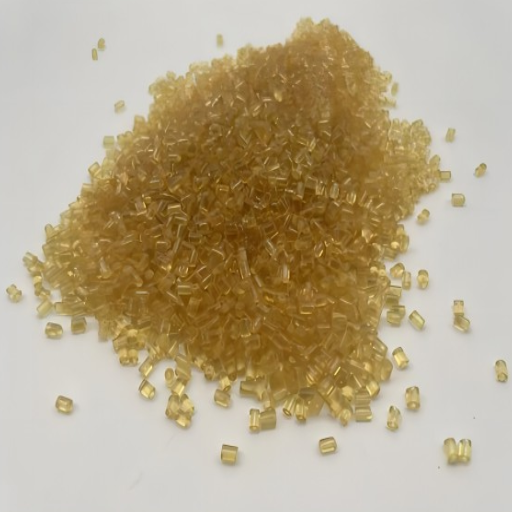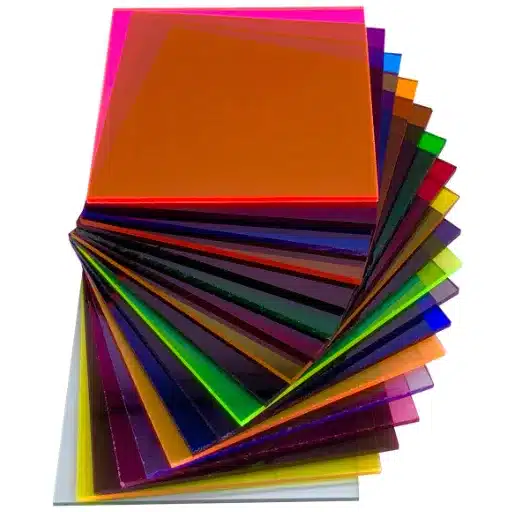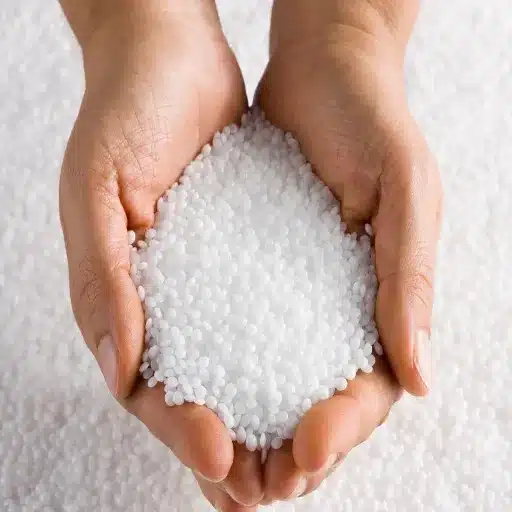Polyetherimide (PEI) has found utility as a high-performance thermoplastic with numerous applications, endowed with a wide range of properties. Known for its exceptional strength, heat resistance, and chemical stability, PEI material is utilized in a wide range of applications, including aerospace and 3D printing. This blog post explores the characteristics that make PEI so unique and the merger of durability and adaptability that has made it indispensable in modern manufacturing and engineering. Whether from the perspective of an industry participant or merely curious about the materials revolutionizing technologies today, this comprehensive guide provides an overview of PEI properties, uses, and the reasons behind its growing popularity.
Understanding PEI Material
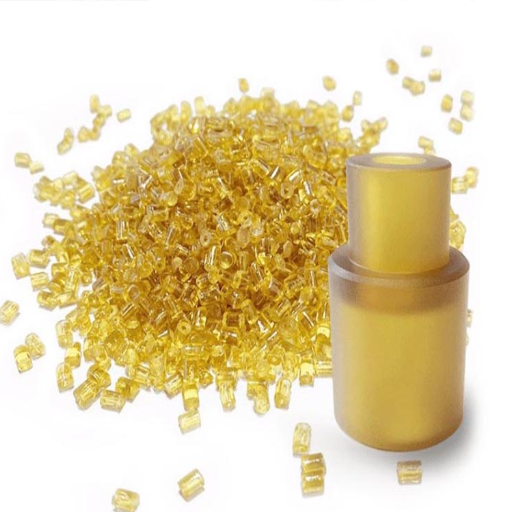
What is PEI?
Polyetherimide is, in fact, a class of thermoplastic resins that has earned a reputation for its high mechanical strength, thermal stability, and innate flame retardance. Being an amorphous polymer, PEI does not exhibit a well-defined crystalline structure, resulting in a highly transparent material with uniform properties. Considered a high-temperature polymer, it can be molded or fabricated into components and used continuously in climatic conditions up to around 340°F (170°C) without any distortion. Due to the demanding nature of its applications, PEI has found usage in aerospace, automotive, and medical industries.
It also displays sound electrical insulation with chemical resistance. In harsh environments where chemical exposure, high voltages, or extreme thermal conditions are the norm, PEI can survive. The low thermal conductivity of the material gives it further scope in advanced engineering applications. The material can be processed by injection molding and 3D printing, making it highly suitable for development yet equally proficient for production.
Chemical Composition of Polyetherimide
Polyetherimide (PEI), an amorphous thermoplastic acrylic polymer, is well appreciated for its excellent mechanical and thermal properties. Design-wise, PEI mainly consists of repeating aromatic imide and ether groups: The imide groups contribute toward rigidity and high resistance to deformation under heat. In contrast, the ether linkages offer some flexibility and toughness to the polymer chain.
Typically, PEI combines bisphenol A (BPA) and phthalic anhydride derivatives to create a closely cross-linked network with strong durability under mechanical stress. This composition enables PEI to maintain its structural integrity over a broad temperature range and remains effective even in conditions exceeding 350°F (177°C). Further to its advantage of satisfying structural integrity in numerous other environments by repelling hydrolysis, the unique polymer structure may also serve well in moisture-laden or chemically aggressive environments on a truly reliable basis.
Such properties as flame retardancy and electrical insulation are inherently dependent on its macromolecular constitution. These properties place PEI in high demand in aerospace, electronics, and health sectors, where tough, adaptable materials are essential. Additionally, polymer chain variations or additives can be introduced during processing, enabling specific properties to be fine-tuned in specialized applications.
Key Technical Properties of PEI
High Thermal Stability: PEI exhibits excellent thermal resistance, with a typical glass transition temperature of approximately 217°C (423°F), making it useful in applications where long-term exposure to high temperatures occurs without compromising structural integrity.
Mechanical Strength and Rigidity: PEI exhibits very high tensile strength and exceptional rigidity and performs well under mechanical loading. It is well-suited to demanding applications, particularly in aerospace and automotive sectors.
Flame Retardancy: PEI achieves stringent flame retardancy and low smoke emission ratings without requiring additional additives. These features enhance safety in various applications, such as electronic components, where fire resistance is essential.
Electrical Properties: PEI is utilized in the electrical and electronics industries due to its exceptional dielectric strength and insulation properties. The properties of the material facilitate the creation of complex circuitry and connectors.
Chemical Resistance: PEI can resist a variety of chemicals, including hydrocarbons, alcohols, and acids, as well as corroding components in aggressive chemical environments. Its stability in such conditions prolongs the lifespan of products that use the material.
Light but with High Dimensional Stability: Despite being lightweight, PEI offers high dimensional stability and low deformation under loads, making it suitable for precision parts where weight and stability are of equal importance.
Adaptable to Further Customization: The material offers a manufacturing option for reinforcement or modification to specific properties, such as impact resistance, UV stability, or transparency, in various grades tailored to particular purposes.
Together, these characteristics position PEI as one of the most advanced materials, truly meeting the challenging needs of today’s industry while ensuring applications that are sustainable and trustworthy in performance.
Properties of PEI and Ultem Plastic
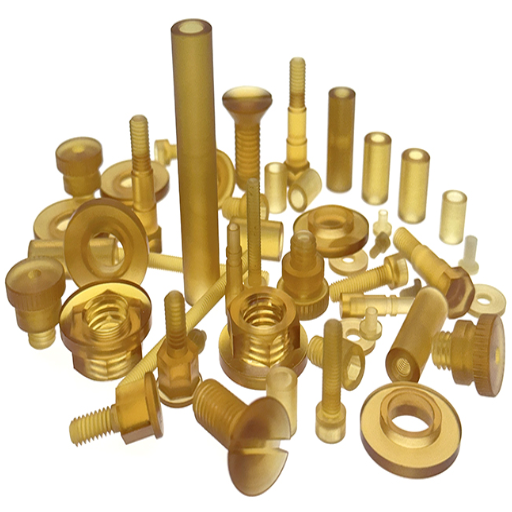
Thermal Stability of PEI Resin
PEI resin has a reputation for exceptional thermal stability, which places it in a category of materials suitable for high-temperature applications. With a Tg of ~217°C (422°F) and continuous use temperatures that can reach 170°C (338°F) without degradation, PEI resists admirably under extreme conditions. Its resistance to thermal deformation is attributed to its amorphous nature and strong interchain interactions, which resist weakening of mechanical properties even after prolonged exposure to heat.
The resin, conversely, exhibits low thermal expansion, thereby ensuring dimensional stability even when the temperature varies. This characteristic makes it suitable for aerospace, electrical insulation, and automotive applications where precise dimensions and longevity under thermal stress are required. In this vein, PEI resin meets structural performance requirements at elevated temperatures, presenting more substantial challenges to today’s engineering and thermally intensive manufacturing needs.
Mechanical Strength and Durability
PEI resin possesses strong mechanical strength and high durability, earning it the reputation as a high-grade resin for demanding applications. Its tensile strength and impact resistance are high enough to provide the best performance under high stress and conditions that cannot be compromised, even in the most severe environmental conditions. The resin usually resists creep deformation, which enables it to sustain heavy static loads over extended periods—a property that is highly advantageous in the aerospace and automotive industries.
It has been demonstrated through laboratory tests that PEI resin retains its structural properties even after multiple cycles of mechanical stress, indicating its fatigue resistance. This durability, combined with its excellent abrasion resistance, enables PEI to increase the lifespan of components that are subject to wear and tear. Such properties make PEI resin the most critical material for applications that require maximum strength combined with long-term reliability.
Chemical Resistance Across Various Environments
PEI resin is renowned for its chemical resistance in numerous environments, making it well-suited for harsh industrial applications. It resists degradation under the influence of various chemicals, including hydrocarbons, alcohols, and weak acids. For instance, PEI resin components are used in the oil and gas sectors, where they are frequently exposed to petroleum-based products and solvent degradation. Despite this, the same resin is used in medical environments and laboratories through contact with disinfectants and sterilizing agents, providing reliable performance from a hygienic perspective. There is evidence to suggest that PEI resin’s chemical resistance remains stable even in prolonged exposure to temperatures well above 200°C in chemically active environments. The material’s capability to withstand the effects of heat, coupled with chemicals and attack, highlights its suitability for high-precision applications such as automotive systems, aerospace components, and semiconductor manufacturing. This more precise performance parameter further emphasizes the material’s dependability in guaranteeing consistent functionality under highly demanding chemical conditions.
Applications of PEI Material
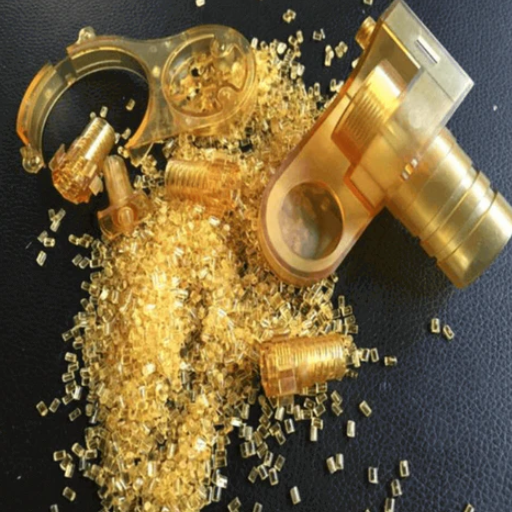
Use in Aerospace and Automotive Industries
Due to its exceptional properties, polyetherimide (PEI) has rightfully earned a place in the aerospace and automotive industries. Raw PEI is a very light material with a high strength-to-weight ratio; in short, it reduces the weight of the vehicle or aircraft without compromising its structural integrity. More fuel is saved in the process, and emissions are reduced, furthering all efforts to promote a viable transportation environment.
In aerospace applications, PEI finds its way as insulation panels, brackets, and connectors to withstand the effects of temperatures at high extremes and chemical degradation. High-altitude environments require even stricter safety regulations in addition to flame retardancy standards, which PEI meets with a vengeance.
Temperature stability and dimensional consistency under load make PEI favorable for applications within the engine compartment, such as parts of the fuel system, ignition devices, and electrical insulators in automobiles. Further applications of PEI occur in ADAS and EVs, where precision and reliability are crucial. Thus, with these dynamic applications and developments, PEI is solidifying its place as a worthy material that drives innovation in these industries.
Advantages in Medical Equipment Manufacturing
Polyetherimide is a material that has experienced rapid growth in the field of medicine due to its exceptional properties and versatility. One significant advantage is that it is highly resistant to chemicals; therefore, any medical equipment made from PEI will be able to withstand various sterilization processes, including autoclaving, without degradation. It is biocompatible and thus safe for use in intrinsic applications, such as surgical instruments, trays, and diagnostic-related apparatus. PEI remains reliable and sturdier under extreme conditions, which ensures the long-term efficacy of medical instruments, thereby reducing their probability of mechanical failure during a life-saving process.
Another significant advantage is its lightweight yet high-strength characteristics, which facilitate the production of ergonomic and durable medical instruments. Given the demand for precision in modern applications, PEI’s dimensional stability enables the manufacture of complex components with precision, ranging from catheter housings to dental equipment. Further, as medical technology advances, PEI applications in building advanced imaging systems and minimally invasive surgical equipment maximize patient outcomes. These properties set PEI on par with the leading materials in the healthcare industry’s direction of innovation.
Role of PEI in Electrical and Electronics
Due to its remarkable thermal stability, dielectric properties, and flame retardance, PEI holds a premier status in the electrical and electronic industries. For places where a high degree of heat resistance is required for components operating under extreme conditions, such as printed circuit boards, connectors, and insulator housings, PEI is the best choice. Additionally, PEI offers high electrical insulation, enabling safe operation in sensitive electrical applications that could otherwise be prone to short circuits or electrical failures.
Being lightweight yet strong, PEI enables the minimization of electronic equipment without compromising structural strength. The flame-retardant nature of PEI, coupled with its adherence to strict electrical safety standards such as UL 94 V-0, makes it a safe option for manufacturing high-grade electronic equipment. PEI continues to support technological advancements in various fields, including telecom, consumer electronics, and aerospace electronics, by ensuring durability, precision, and reliability in the design of complex devices.
Injection Molding and Machining with PEI
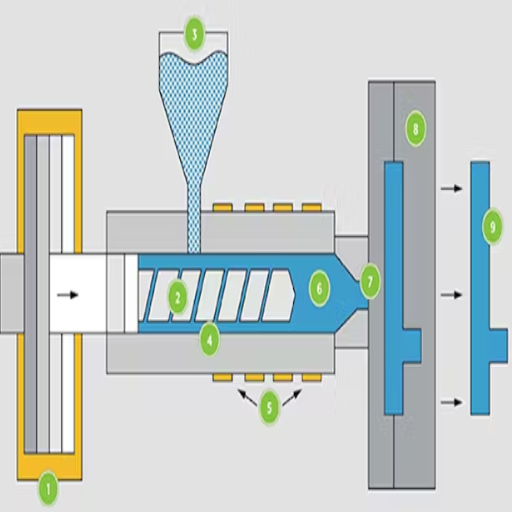
Injection Molding Techniques for PEI
Injection molding is one of the most effective methods for processing polyetherimide (PEI), a thermoplastic renowned for its superior strength and thermal stability. Since PEI needs a high processing temperature, special preparation and equipment are required. The barrel temperatures typically range from 340 to 400°C, while the mold temperatures need to be maintained between 120 and 175°C to ensure optimal flow and crystallinity.
Drying of PEI resin before molding should never be overlooked, as moisture above 0.02% can lead to defects, such as splay or lower mechanical properties. Resins are thus usually dried for 3 to 4 hours at 150-160°C. Additionally, consideration should be given to the design of the screw and nozzle, as high shear stress can cause degradation of the polymer.
Injection pressures in moldings typically range from 10,000 psi to 20,000 psi, depending mainly on the part’s geometry and wall thickness. The gating system needs to be designed to allow for a smooth flow of material, with popular gate types including tab gates and fan gates. Proper venting should be provided in the mold to prevent the trapping of gases and maintain a smooth surface finish.
After molding, PEI parts shrink very little and exhibit excellent dimensional stability, allowing precision to be built into the parts. When optimized in terms of its material properties, the injection molding process enables the manufacture of components that are both lightweight and strong, suitable for applications within the automotive, medical, and aerospace industries.
Machined Parts: Precision and Performance
Machined parts made out of PEI (Polyetherimide) enjoy a reputation for high precision and performance. Due to the excellent mechanical properties and dimensional stability of this engineering-grade thermoplastic, it is well-suited to applications involving complex geometries and tight tolerances. Advanced CNC machining ensures uniformity and consistency even in complex designs.
Thermally, PEI shows resistance to continued use up to 340°F (170°C) and is thus great for harsh applications. From a chemical resistance standpoint, it is highly resistant to hydrocarbons, alcohols, and many acids, making it very resistant in harsh environments. Its low thermal expansion coefficient combined with excellent dielectric properties places PEI machined parts at the forefront of contributing impudence in aerospace, electronics, and medical devices, where precision and reliability are paramount.
To increase the machinability of PEI, grades reinforced with glass or carbon fibers are favored. These modifications improve strength and stiffness while maintaining good machinability. The attention to detail required when machining PEI, combined with its properties, enables the production of components that perform better in challenging applications, thereby guaranteeing optimal results for various industrial demands.
A Comparison of PEI and Other Engineering Plastics
Polyetherimide (PEI) enjoys popularity in demanding applications owing to its excellence in critical performances. PEI’s main competitive advantage is that it will withstand continuous operating temperatures of up to 356°F (180°C). This certainly puts it ahead of such materials as polycarbonate (PC) and polyamide (PA), which are less thermally resistant.
In the industrial environment, PEI exhibits excellent dimensional stability under thermal and mechanical stress, enabling the production of manufactured parts with precise tolerances. It is another thermoplastic which is flame retardant almost by nature, thereby eliminating the need for any flame retarding additives. It passes stringent flame retardant standards such as UL94 V-0. Under this aspect, however, PEI outperforms polymethyl methacrylate (PMMA) and acrylonitrile butadiene styrene (ABS) in terms of flame retardancy, which is a crucial matter.
PEI also stands out in strength and stiffness; when glass- or carbon-fiber reinforced, its strength (tensile) and modulus far surpass many alternatives in everyday use, such as polyethylene terephthalate (PET) and PC. Moreover, PEI finds itself well-suited to aerospace and electronics markets due to its low outgassing and radiation resistance characteristics.
While PTFE receives the highest marks for extreme lubricity and chemical resistance, it cannot compare to the rigidity and strength of PEI. PEEK, on the other hand, can boast of a very similar performance, but the price tag is often several times higher, leaving PEI as the more reasonable option in many cases.
Thus, these comparative considerations emphasize the unique balance that PEI has, positioning it as one of the most versatile and capable, yet cost-effective, high-performance engineering plastics of the modern industries.
Future Trends in PEI Material Usage
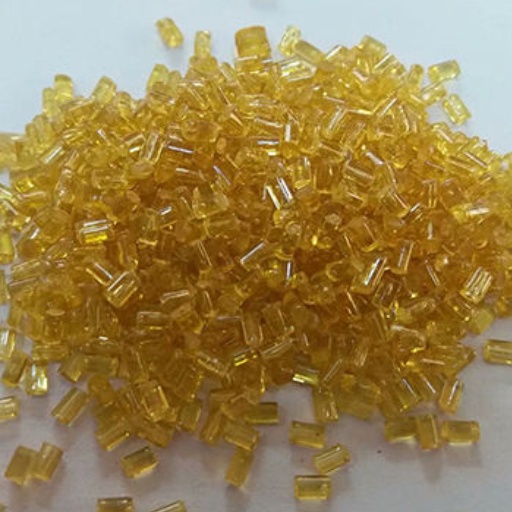
Innovations in PEI Resin Development
Being deeply interested in the advancement of materials science, I find developments in the PEI resin truly enchanting. Over the years, there have been substantial advances in modifying polyetherimide properties to suit very specialized applications. More recent studies aim to improve its impact resistance and thermal stability, enabling it to withstand environments where intense mechanical or thermal demands are typically the norm. Moreover, newer blends and composites of PEI have further expanded its potential, making it an attractive choice for industries such as aerospace, automotive, and healthcare that require materials with such high levels of durability and reliability.
Another fascinating area is the pursuit of sustainable PEI production, as polymer chemists work toward developing bio-based precursors to reduce dependence on fossil-derived components and, consequently, the environmental footprint of such manufacture. At the same time, and to go further in the idea of a circular economy, recycling methods for PEI continue to improve, which means reclaiming and reusing this material without compromising its high-performance credentials. These advances technically enhance the appeal of PEI as a material of choice and are geared toward promoting the viability of sustainability in industrial operations worldwide.
Emerging Applications in Technology
With its extraordinary properties and flexibility, PEI (polyetherimide) is increasingly used in a broad array of new technological applications. From advanced electronics to aerospace components, PEI is chosen as a high-performance material due to its excellent thermal stability, mechanical strength, and chemical resistance. For example, in electronics, PEI is used in connectors, insulators, and housing for sensors, where durability and precision are the prime requirements. Additionally, due to ongoing miniaturization trends in the tech sector, materials like PEI must be able to withstand extreme conditions while maintaining reliable performance, allowing for compact designs.
In the aerospace and automotive sectors, however, PEI-based products are excellent candidates for manufacturing lightweight and durable components, which improve fuel efficiency and reduce emissions. These attributes make it equally attractive for cabin interiors, for which flame-retardant and low-toxicity standards are required. At the same time, its structural integrity renders it suitable for critical purposes, such as engine housings and fuel systems. Additionally, with additive manufacturing, PEI has new opportunities to create complex geometries and custom parts with consistent quality.
Demonstrating how PEI fosters development in various fields, these advancements serve to meet expanding expectations in sustainability, efficiency, and performance. The versatility of PEI makes it a key material in the paradigm shift towards contemporary technologies and the adoption of cleaner, more efficient industrial practices.
Sustainability Considerations for PEI Products
When considering the sustainability of PEI products, the focus is on their ability to promote environmentally responsible practices without compromising performance. The use of PEI as a highly durable yet lightweight material holds significant potential for enabling the manufacture of components that directly contribute to reducing energy consumption in key applications, such as the aerospace and automotive industries. Lightweight PEI components in aircraft and vehicles lower fuel consumption, thereby contributing directly to a reduction in carbon emissions over time, in line with the global impetus toward clean technologies and the reduction of environmental impacts.
Additionally, PEI ensures that products manufactured from this material have the longest lifespan possible through excellent thermal and chemical resistance. This means less plastic waste, as the products require less frequent replacement, thereby supporting the circular economy and sustainable manufacturing practices. Additionally, the further development of recycling techniques and additive manufacturing has opened up opportunities for working with PEI materials in innovative ways yet to be explored, indicating that even for high-performance plastics like PEI, reducing material waste is possible.
I think it is crucial to emphasize the development and application of PEI products that help achieve sustainability targets. Through the use of recycled raw materials, cost-effective production, or resource-conscious manufacturing practices, PEI is well-positioned to take advantage of the provided avenues toward a greener solution. Below are the ways that prove PEI is poised to play as a greener alternative, thereby lending weight to a growing demand for greener, sustainable industrial materials while providing an outstanding quality of performance and reliability.
Reference Sources
- Polyetherimide – Wikipedia – Provides an overview of PEI material’s physical and mechanical properties.
- PEI Plastic – TECAPEI by Ensinger Plastics – Details PEI’s properties, including high temperature resistance and mechanical strength.
- Ultem® PEI Plastic Material Properties & Uses – Curbell Plastics – Highlights performance characteristics and applications of PEI.
- Polyetherimide (PEI) – Drake Plastics – Discusses PEI’s use in various industries, including aerospace and medical.
- Polyetherimide – An Overview – ScienceDirect – Explores PEI’s applications in electronics, automotive, and more.
- View PC Plastic Pellets Manufacturers in China
Frequently Asked Questions (FAQs)
What is PEI material, and what are its applications?
PEI material, namely polyetherimide, represents a high-performance engineering thermoplastic with excellent mechanical properties. This engineering thermoplastic, found in the most adverse applications, respects dimensional stability and strength within medical devices, connectors, and sockets. The material exhibits resistance to heat and chemical resistance, making it suitable for a variety of settings. Other processes of resistance include tensile strength, shear modulus, and rigidity, which prevent PEI from permanent deformation under high temperatures. Hence, being highly versatile, industries often request PEI when durability and reliability are required.
What are the material properties of Ultem® plastic?
Ultem plastic is a well-established brand of PEI resin with a wide range of desirable properties. It is an amorphous polymer with excellent electrical properties, making it suitable for applications in the electronics and aerospace industries. Ultem has good impact strength and rigidity at elevated temperatures, making the polymer additionally useful for structural applications. Its adequate tensile strength allows it to bear loads without failing. It is translucent and amber in color, making it somewhat pleasing to the eye in specific applications.
How does PEI resin compare to other thermoplastics?
PEI resin has rather unusual features that allow it to resist temperature much better than regular thermoplastic and to exhibit very commendable mechanical properties. The presence of stress in creep constitutes an unusual working condition for most plastics. In such working conditions, all other plastics could not be considered except PEI. While some other materials may offer flexibility and a price advantage, an engineer would choose the outstanding performance characteristics of PEI for applications in a high-tech environment. Unlike polyimide or unreinforced plastic, PEI retains its strength and rigidity in harsh environmental conditions.
Can PEI material stand stiff temperatures?
Yes, PEI material is differentiated due to its ability to withstand high temperatures, making it suitable for applications where thermal stability is indispensable. The glass transition temperature of PEI is significantly higher compared to other classic plastics, enabling it to perform well under extreme conditions. This engineering thermoplastic maintains its properties in the face of wide temperature variations, and therefore does not become brittle or lose strength. The thermal properties of the polymer also enhance the use of PEI in applications for reusable medical devices and automotive parts.
What are the benefits of using Ultem 2300?
Ultem 2300 is a grade of PEI that offers several unique benefits for industrial applications. High strength and rigidity are its strength, and it shows excellent dimensional stability capabilities, which are crucial for accurate components. This high-performance thermoplastic exhibits excellent electrical properties, making it suitable for use in electrical and electronic applications. By resisting stress cracking and impact, it adds to its already reliable properties in rigorous working environments. Moreover, Ultem 2300 is also compatible with many other manufacturing processes, enabling cost-effectiveness for complex parts.
What makes PEI polymer a material of choice for medical devices?
Used in the preparation of medical devices, PEI polymers exhibit excellent mechanical and thermal properties. It provided strength and rigidity, allowing the devices to withstand harsher use without failing. The PEI showed the highest chemical resistance combined with good dimensional stability in the reliability of medical instruments. It is sterilizable and can meet regulatory standards, making it even more suitable for use in healthcare. The color and translucency of PEI offer some aesthetic benefits in the design of medical devices.

